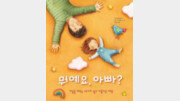The cause of the downfall of people refutes existing beliefs
Reconstructing social disaster in the climate crisis
◇The Price of Downfall/Written by Timothy Brook/Translated by Park Chan-geun/336 pages, 26,500 won, Beyond Books
1642 was the worst year in the history of China’s Ming Dynasty. An unprecedented combination of severe cold waves, droughts, epidemics, gusts of wind, earthquakes, and locust swarms occurred. Millions of people across the country were driven to death. The living wandered around looking for chaff or rotten food. Even if I could just get a few pieces of rice husk or tree bark, I was happy. Two years later, the Ming Empire collapsed.
In a new book, the author, a professor of Chinese history at the University of British Columbia in Canada, asserts that ‘climate’ is the factor that can explain the extreme grain inflation that led to the fall of the Ming Empire. This refuted the existing belief that inflation was triggered by the influx of silver and money supply in the late Ming Dynasty. After collecting hundreds of price data, he shows that the time coincides with the Little Ice Age. This means that natural phenomena determined the fate of the Ming Empire.
To prove this, we collected about 3,000 volumes of local newspapers, essays, diaries, memoirs, and ledgers of the British East India Company from the Ming, Qing, and Republic periods. We extracted grain price data from 777 cases of famine and tracked price trends by grain type, including rice, barley, wheat, and soybeans. Rather than interpreting prices solely as a result of climate change, the attempt to use prices during the Ming Dynasty as a proxy indicator for detecting climate change is also attracting attention.
Through this, it vividly reconstructs the process by which the climate crisis escalated into disaster and the experiences of ordinary people who suffered from unbearably soaring grain prices. Particularly interesting is the estimate of the annual living expenses required by a working-class family during the Ming Dynasty not only for basic food, clothing, and shelter, but also for raising children. Working-class families, including workers, soldiers, self-employed people, artisans, and fishermen, needed 14 taels of silver to survive the year. In comparison, the middle class cost 23 nyang. The annual wage of the working class was 5 to 12 nyang of silver, and that of the middle class was 14 to 22 nyang. The shortage was solved on its own by producing food in the garden.
We also presented 25 items that can be purchased with 1 penny, 1 dong, and 1 nyang respectively. During most of the Ming Dynasty, the normal price of a head of rice was 3 to 4 pennies of silver, but during the famine caused by the Little Ice Age, it jumped to 10 to 30 pennies of silver. It would be interesting to compare that time with the present, when the pain of climate crisis, pandemic, and inflation is looming. Lee Jeong-mo, former director of the Gwacheon National Science Museum, said in his recommendation, “It is not just a history book. “It shows the power of climate,” he wrote.
the scent of a book >
subscribe

-

editorial
-

game industry
-

cat eyes
Reporter Kim So-min somin@donga.com
Source: www.donga.com


